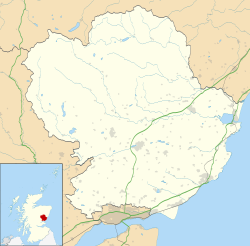| Menmuir | |
|---|---|
 Kirkton of Menmuir | |
Location within Angus | |
| Population | approx. 250 |
| OS grid reference | NO532644 |
| Council area | |
| Lieutenancy area | |
| Country | Scotland |
| Sovereign state | United Kingdom |
| Post town | BRECHIN |
| Postcode district | DD9 |
| Dialling code | 01356 |
| Police | Scotland |
| Fire | Scottish |
| Ambulance | Scottish |
| UK Parliament | |
| Scottish Parliament | |
Menmuir is a parish in the county of Angus in Scotland.
Contents
Kirkton of Menmuir consists of only three houses (the Old Schoolhouse, the Manse, the Old Inn) and for this reason is referred to locally as "twa hooses and another yin," but around 250 people live in the area and the community hall is well used.
